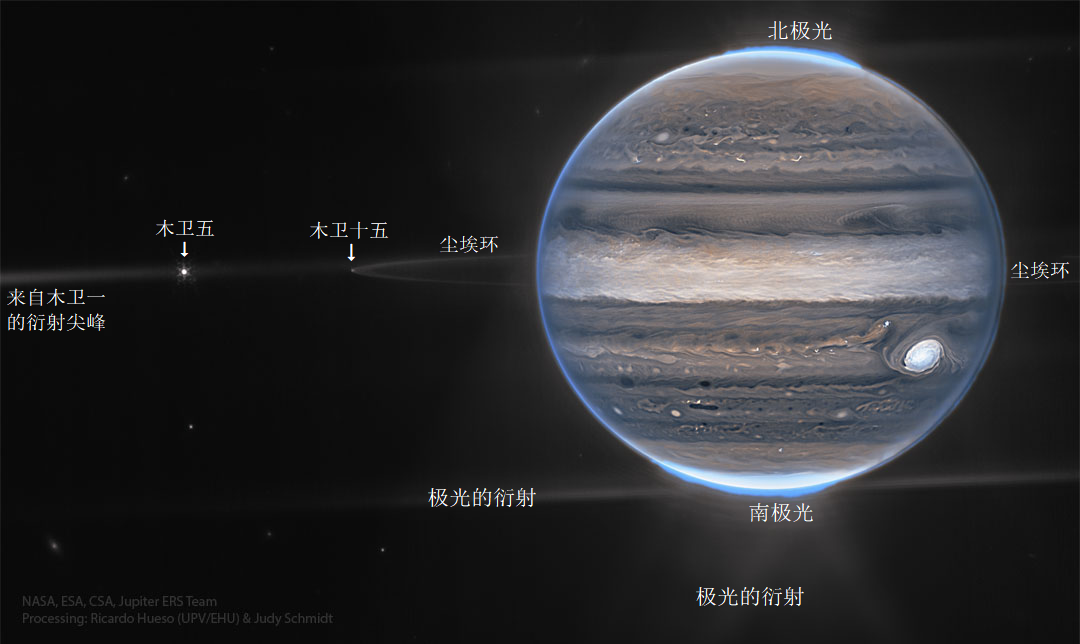2022年8月30日
Jupiter from the Webb Space Telescope
Image Credit: NASA, ESA, CSA, Jupiter ERS Team; Processing: Ricardo Hueso (UPV/EHU) & Judy Schmidt
Explanation: This new view of Jupiter is illuminating. High-resolution infrared images of Jupiter from the new James Webb Space Telescope (Webb) reveal, for example, previously unknown differences between high-floating bright clouds — including the Great Red Spot — and low-lying dark clouds. Also clearly visible in the featured Webb image are Jupiter’s dust ring, bright auroras at the poles, and Jupiter’s moons Amalthea and Adrastea. Large volcanic moon Io’s magnetic funneling of charged particles onto Jupiter is also visible in the southern aurora. Some objects are so bright that light noticeably diffracts around Webb’s optics creating streaks. Webb, which orbits the Sun near the Earth, has a mirror over 6 meters across making it the largest astronomical telescope ever launched — with 15 times more light-collecting area than Hubble.
Tomorrow’s picture: unusual mars
韦伯太空望远镜的木星影像
影像提供: NASA, ESA, CSA, Jupiter ERS Team; 影像处理: Ricardo Hueso (UPV/EHU) & Judy Schmidt
说明: 这幅木星的新影像很有启发性。具体来说,这幅韦伯太空望远镜所拍摄的高解析率木星红外光影像,揭示了明亮高层云(包括大红斑)和暗色低层云之间前所不知的差异。此外,在这幅韦伯望远镜影像里,还可见到木星的尘埃环、两极的明亮极光、以及木星的卫星木卫五和木卫十五。在南极光里,亦可见到由火山活动剧烈的木卫一,以磁场把带电粒子磁引导到木星上所造成亮斑。影像中有部分天体是如此的明亮,以至于它们的光在韦伯的光学系统周围产生明显的衍射,从而产生带纹。主镜直径超过6米的韦伯望远镜,在地球附近绕太阳运行,它是迄今为止发射的最大型天文望远镜,集光面积为哈勃望远镜的15倍。
明日的图片: unusual mars







